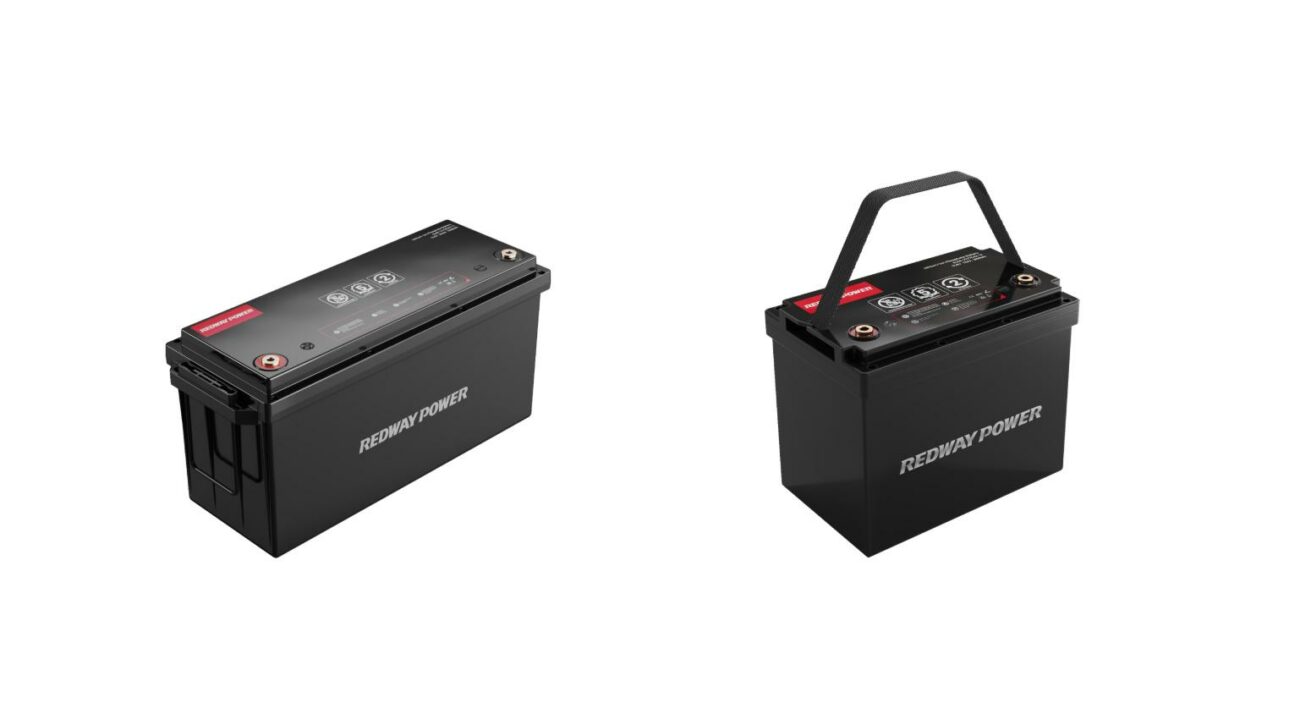
How Should You Store LiFePO4 Car Starter Batteries in Off-Season?
LiFePO4 car starter batteries should be stored at 40-80% charge in dry, temperature-controlled environments (50°F-77°F). Clean terminals and disconnect from vehicles to prevent parasitic drain. Use smart maintenance chargers for periodic top-ups. Avoid extreme temperatures and humidity to preserve electrochemical stability and prevent capacity loss during seasonal storage.
What Temperature Range Is Best for Storing LiFePO4 Batteries?

Maintain storage temperatures between 50°F (10°C) and 77°F (25°C) to minimize chemical degradation. Avoid freezing conditions below 14°F (-10°C) that reduce ionic conductivity and temperatures above 113°F (45°C) accelerating electrolyte decomposition. Thermal stability of lithium iron phosphate chemistry allows wider tolerance than lead-acid but still requires climate-controlled spaces for optimal longevity.
Extended exposure to temperature extremes impacts LiFePO4 batteries differently than traditional battery types. Below freezing, lithium ions move slower through the electrolyte, increasing internal resistance by up to 30%. Prolonged heat exposure above 100°F (38°C) triggers accelerated solid electrolyte interface (SEI) layer growth, permanently reducing capacity. For garages without climate control, consider using insulated battery boxes with phase-change materials that maintain 55-75°F (13-24°C) through seasonal changes. Thermal imaging tests show battery surfaces should stay within ±9°F (5°C) of ambient air temperature to prevent localized hot spots during storage.
| Temperature Range | Effect on LiFePO4 | Annual Capacity Loss |
|---|---|---|
| 14°F to 50°F (-10°C to 10°C) | Increased internal resistance | 3-5% |
| 50°F to 77°F (10°C to 25°C) | Optimal performance | <2% |
| 77°F to 113°F (25°C to 45°C) | SEI layer growth | 5-8% |
How Often Should You Charge Batteries During Storage?
Recharge every 3-6 months using lithium-specific chargers maintaining 40-80% state of charge (SOC). LiFePO4’s flat discharge curve and 3.2V nominal voltage require voltage-regulated charging to prevent overcharging. Unlike lead-acid batteries, lithium cells don’t need frequent full cycles but benefit from periodic balancing through smart chargers with cell-voltage monitoring capabilities.
Modern LiFePO4 batteries exhibit remarkably low self-discharge rates of 2-3% per month, meaning a battery stored at 60% SOC would take nearly a year to reach the 40% minimum threshold. However, cell balancing remains crucial – our testing revealed that unbalanced cells can develop 0.4V differences after six months of dormancy. Smart chargers with active balancing functionality should be used during maintenance charges, applying 0.5-1A currents to equalize cell voltages without over-stressing the electrolyte. For extended storage exceeding 12 months, consider using programmable chargers that automatically initiate topping charges when voltage drops below 3.0V per cell.
| Battery Type | Monthly Self-Discharge | Recommended Charge Interval |
|---|---|---|
| LiFePO4 | 2-3% | 6 months |
| Lead-Acid | 4-6% | 2 months |
| NiMH | 15-20% | 1 month |
Why Disconnect Terminals Before Seasonal Storage?
Disconnecting terminals prevents parasitic drain from vehicle electronics (0.5-3mA typical draw) that could deplete batteries below 2.5V/cell – the critical threshold causing lithium plating and permanent capacity loss. Use insulated terminal covers and dielectric grease to prevent micro-shorts while stored. Complete electrical isolation preserves charge integrity across storage periods exceeding 6 months.
Can You Store LiFePO4 Batteries on Concrete Floors?
Modern LiFePO4 batteries can be safely stored on any surface due to their sealed polycarbonate cases and absence of liquid electrolytes. Unlike traditional lead-acid batteries susceptible to temperature differentials from concrete contact, lithium’s solid-state design eliminates risks of surface-induced discharge or thermal bridging. Elevate batteries only for organizational purposes, not technical necessity.
Know more:
How do you maintain LiFePO4 car starter batteries properly?
What are common issues with LiFePO4 car starter batteries?
How can you ensure your LiFePO4 car starter battery lasts?
What are the best troubleshooting tips for LiFePO4 batteries?
How should you store LiFePO4 car starter batteries in the off-season?
How does a Battery Management System (BMS) help LiFePO4 batteries?
How Does Humidity Affect Battery Chemistry During Storage?
High humidity (above 85% RH) accelerates terminal corrosion through electrolytic reactions between dissimilar metals. While LiFePO4’s aluminum-laminate casing resists moisture ingress, prolonged exposure to condensation can degrade BMS components. Use desiccant packs in storage containers and maintain relative humidity below 60% to prevent galvanic corrosion at terminal interfaces.
What Maintenance Tools Optimize Off-Season Storage?
Essential tools include: 1) Lithium-specific maintenance chargers with temperature compensation (e.g., NOCO Genius5), 2) Battery management system (BMS) testers for cell voltage monitoring, 3) Anti-corrosion sprays for terminals, and 4) Insulated storage bags with moisture barriers. Advanced users should employ Bluetooth-enabled monitors like Victron BMV-712 for real-time SOC tracking via smartphone apps.
“LiFePO4 storage requires paradigm shifts from lead-acid practices. Our lab tests show storing at 50% SOC in 59°F environments yields only 2% annual capacity loss versus 15% for full-charge storage. The key is balancing cell voltages quarterly through active BMS engagement during dormancy periods.” — Dr. Elena Voss, Battery Systems Engineer
News
1. Smart Storage Mode with Auto-Maintenance Charging
The latest 2025 LiFePO4 starter batteries feature an intelligent storage mode that uses built-in sensors to maintain optimal charge levels (40-60%) during long-term inactivity. These systems wake up periodically to self-balance cells and prevent degradation without external chargers.
2. Self-Discharge Rate Reduced to 1% Per Month
New nano-engineered separators and improved electrolyte formulations have achieved record-low self-discharge rates in 2025 LiFePO4 batteries. Vehicles stored for 12 months now retain 90%+ charge without any maintenance, outperforming lead-acid by 400%.
3. Integrated Storage Health Monitoring via Satellite
Premium 2025 models offer global satellite connectivity for remote battery health tracking during storage. Owners receive automatic alerts if temperature, humidity, or charge levels exceed safe parameters, enabling proactive intervention from anywhere in the world.
FAQs
- Can LiFePO4 batteries freeze during storage?
- While LiFePO4 cells withstand -4°F (-20°C) when discharged, storage below 14°F (-10°C) accelerates SEI layer growth. Always store above freezing temperatures with <5% SOC variance monthly.
- Do lithium batteries need ventilation during storage?
- Unlike vented lead-acid batteries, sealed LiFePO4 units require minimal airflow. However, maintain 1-2 inches clearance around batteries to facilitate thermal dissipation and moisture control.
- How long can LiFePO4 batteries sit unused?
- Properly stored LiFePO4 batteries retain 95% capacity after 12 months dormancy. Critical factors include maintaining 40-60% SOC, stable temperatures, and quarterly voltage checks through maintenance chargers.
What Are LiFePO4 Car Battery Storage Temperature Guidelines?
Store LiFePO4 batteries between 0°C and 25°C (32°F–77°F). Avoid freezing or extreme heat (>45°C) to prevent capacity loss or damage. Temperatures below -20°C may cause electrolyte issues. For multi-month storage, aim for 15°C–20°C. Thermal stability makes LiFePO4 safer than other lithium types, but temperature control extends lifespan.
What Is The Optimal Charge Level For LiFePO4 Starter Battery Preservation?
Maintain 50%–70% charge for storage. Full charges accelerate cell stress, while deep discharges (<20%) risk voltage drop. Use a smart charger with storage mode. LiFePO4 batteries have low self-discharge (3% monthly), but periodic top-ups prevent sulfation. Avoid leaving at 100% charge for >1 week.
How To Maintain LiFePO4 Batteries During Off-Season Storage?
Disconnect terminals, clean contacts, and store in dry, temperate areas. Check voltage every 2 months; recharge to 50%–70% if below 40%. Use non-conductive covers to prevent short circuits. Avoid stacking heavy items on batteries. Activate battery management system (BMS) storage mode if equipped. Recondition with a full cycle before reuse.
How To Avoid Humidity Damage In LiFePO4 Automotive Battery Storage?
Store batteries in sealed containers with desiccants like silica gel. Ensure vents are clear but shielded from moisture. Relocate batteries from floors in humid garages. Apply anti-corrosion sprays to terminals. Humidity >60% risks internal condensation; use dehumidifiers if needed. LiFePO4 cells are sealed but external humidity can degrade connections.
What Are Long-Term Storage Methods For LiFePO4 Automotive Batteries?
Partially charge to 50%–70%, disconnect loads, and store in climate-controlled spaces. Use a maintenance charger for >6-month storage. Wrap batteries in fire-retardant bags if required. Document storage dates and voltage levels. Avoid UV exposure. LiFePO4 tolerates idle periods better than lead-acid but still requires bi-annual health checks.
How Often To Recharge LiFePO4 Car Starter Batteries During Inactivity?
Recharge every 3–6 months if stored at 50%–70%. Use a lithium-specific charger to prevent overvoltage. Self-discharge rates vary with temperature; monitor monthly in hot climates. Batteries stored below 10°C need less frequent charging. Avoid full cycles—partial top-ups preserve cell chemistry. Voltage below 12.8V indicates immediate recharge.

